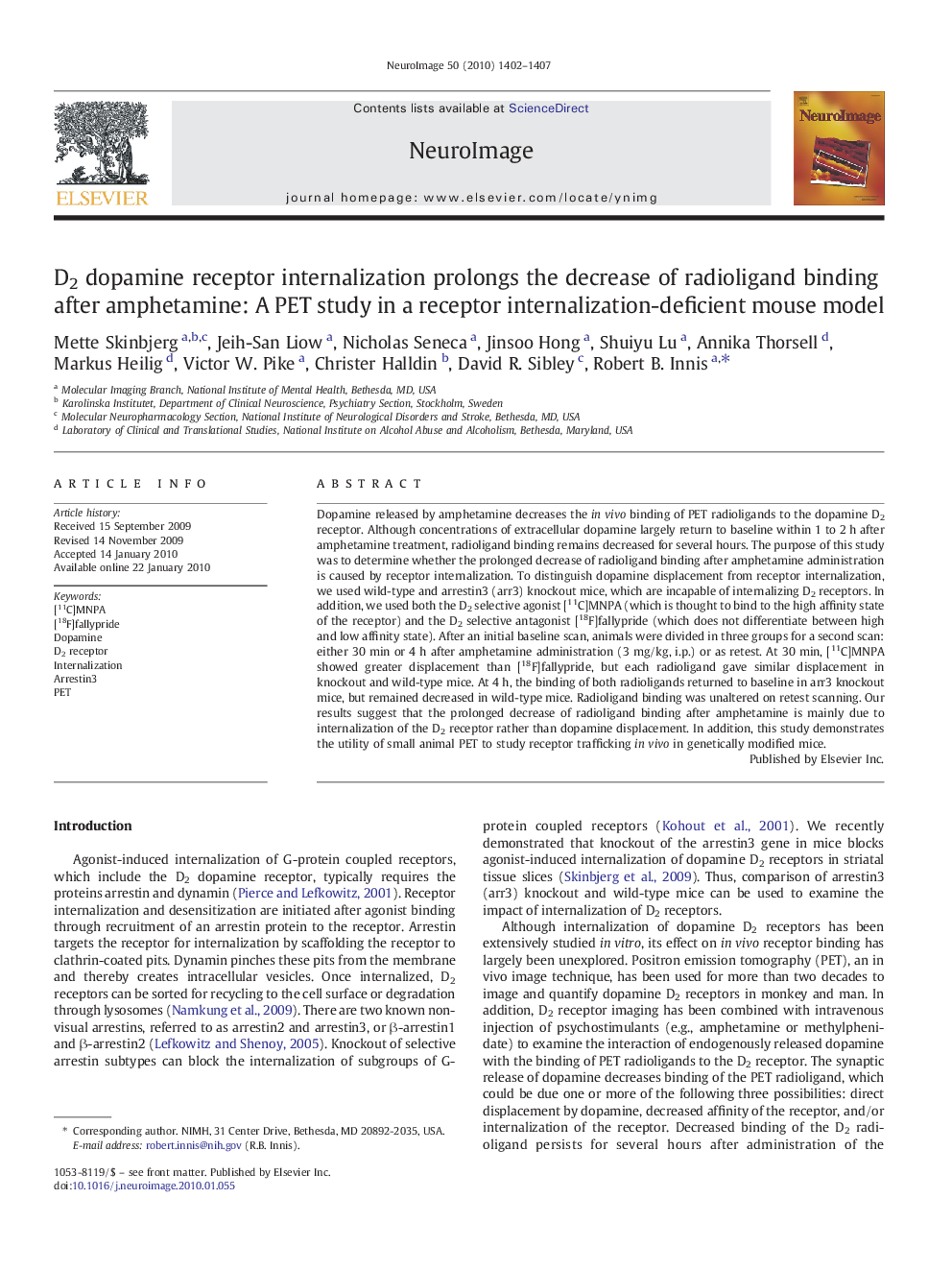| کد مقاله | کد نشریه | سال انتشار | مقاله انگلیسی | نسخه تمام متن |
|---|---|---|---|---|
| 6037298 | 1580942 | 2010 | 6 صفحه PDF | دانلود رایگان |
عنوان انگلیسی مقاله ISI
D2 dopamine receptor internalization prolongs the decrease of radioligand binding after amphetamine: A PET study in a receptor internalization-deficient mouse model
دانلود مقاله + سفارش ترجمه
دانلود مقاله ISI انگلیسی
رایگان برای ایرانیان
کلمات کلیدی
موضوعات مرتبط
علوم زیستی و بیوفناوری
علم عصب شناسی
علوم اعصاب شناختی
پیش نمایش صفحه اول مقاله

چکیده انگلیسی
Dopamine released by amphetamine decreases the in vivo binding of PET radioligands to the dopamine D2 receptor. Although concentrations of extracellular dopamine largely return to baseline within 1 to 2 h after amphetamine treatment, radioligand binding remains decreased for several hours. The purpose of this study was to determine whether the prolonged decrease of radioligand binding after amphetamine administration is caused by receptor internalization. To distinguish dopamine displacement from receptor internalization, we used wild-type and arrestin3 (arr3) knockout mice, which are incapable of internalizing D2 receptors. In addition, we used both the D2 selective agonist [11C]MNPA (which is thought to bind to the high affinity state of the receptor) and the D2 selective antagonist [18F]fallypride (which does not differentiate between high and low affinity state). After an initial baseline scan, animals were divided in three groups for a second scan: either 30Â min or 4Â h after amphetamine administration (3Â mg/kg, i.p.) or as retest. At 30Â min, [11C]MNPA showed greater displacement than [18F]fallypride, but each radioligand gave similar displacement in knockout and wild-type mice. At 4Â h, the binding of both radioligands returned to baseline in arr3 knockout mice, but remained decreased in wild-type mice. Radioligand binding was unaltered on retest scanning. Our results suggest that the prolonged decrease of radioligand binding after amphetamine is mainly due to internalization of the D2 receptor rather than dopamine displacement. In addition, this study demonstrates the utility of small animal PET to study receptor trafficking in vivo in genetically modified mice.
ناشر
Database: Elsevier - ScienceDirect (ساینس دایرکت)
Journal: NeuroImage - Volume 50, Issue 4, 1 May 2010, Pages 1402-1407
Journal: NeuroImage - Volume 50, Issue 4, 1 May 2010, Pages 1402-1407
نویسندگان
Mette Skinbjerg, Jeih-San Liow, Nicholas Seneca, Jinsoo Hong, Shuiyu Lu, Annika Thorsell, Markus Heilig, Victor W. Pike, Christer Halldin, David R. Sibley, Robert B. Innis,